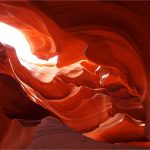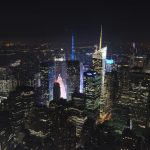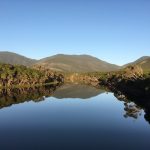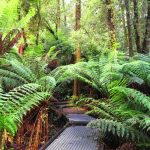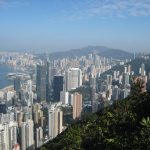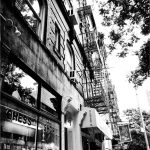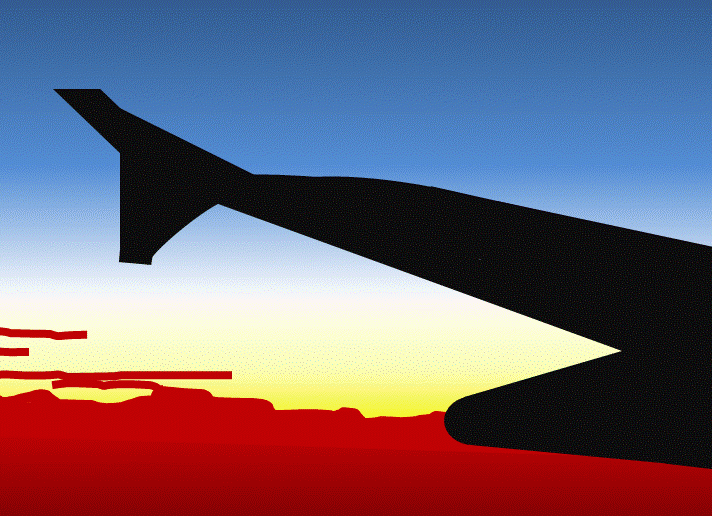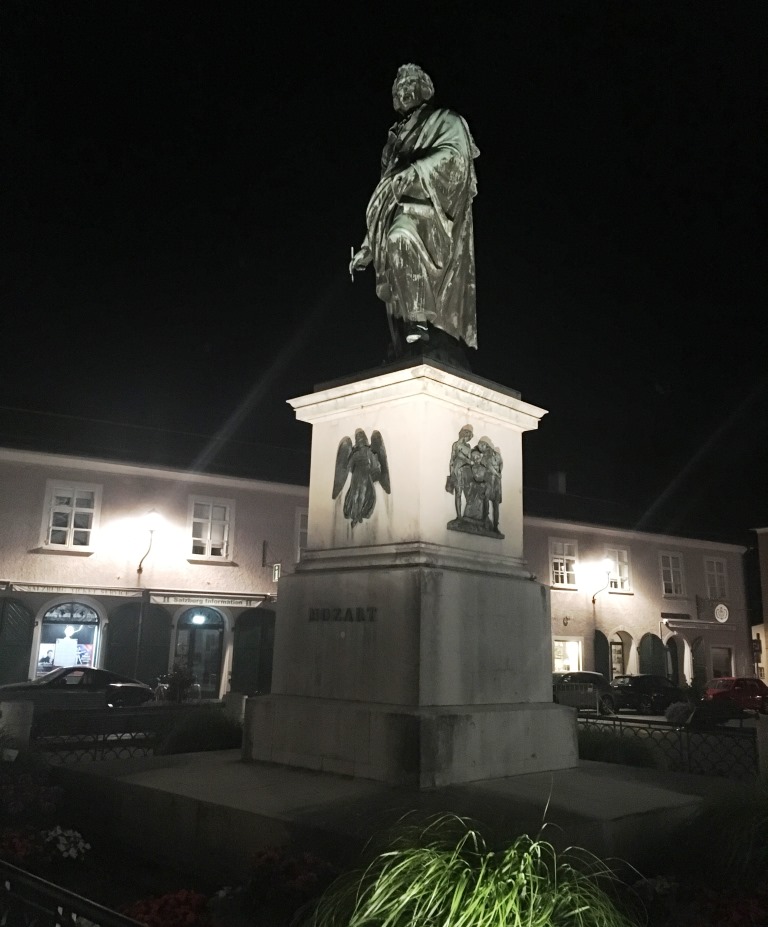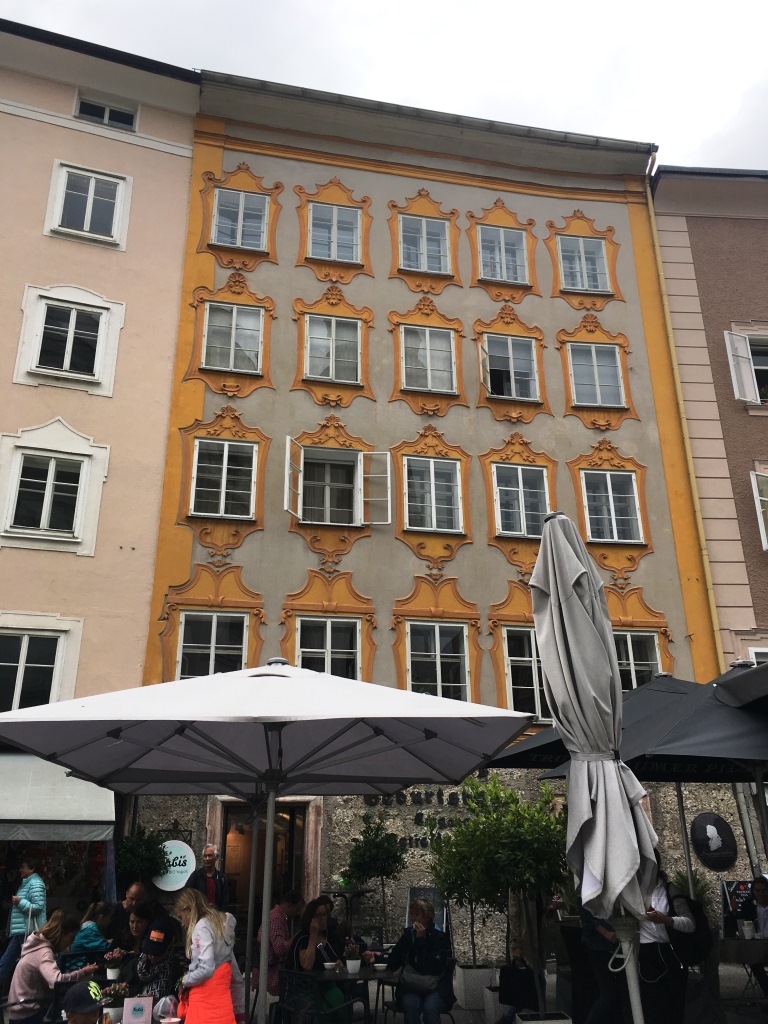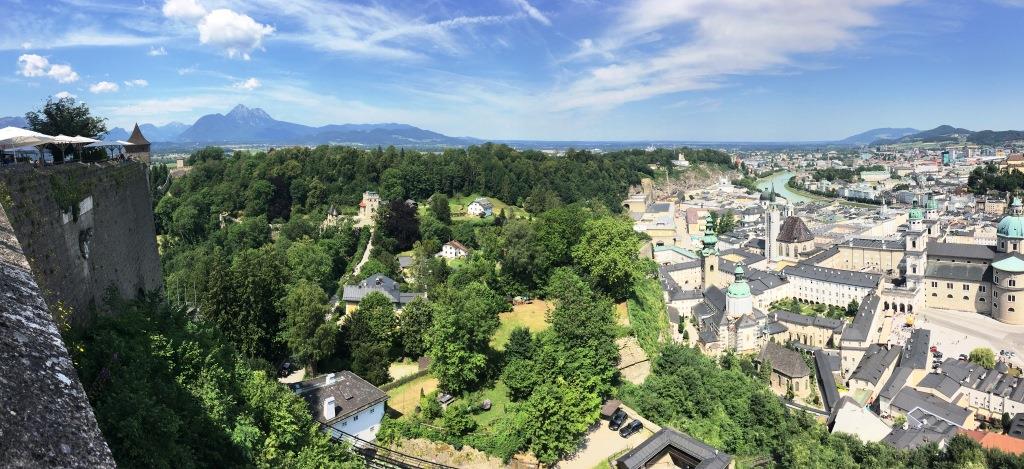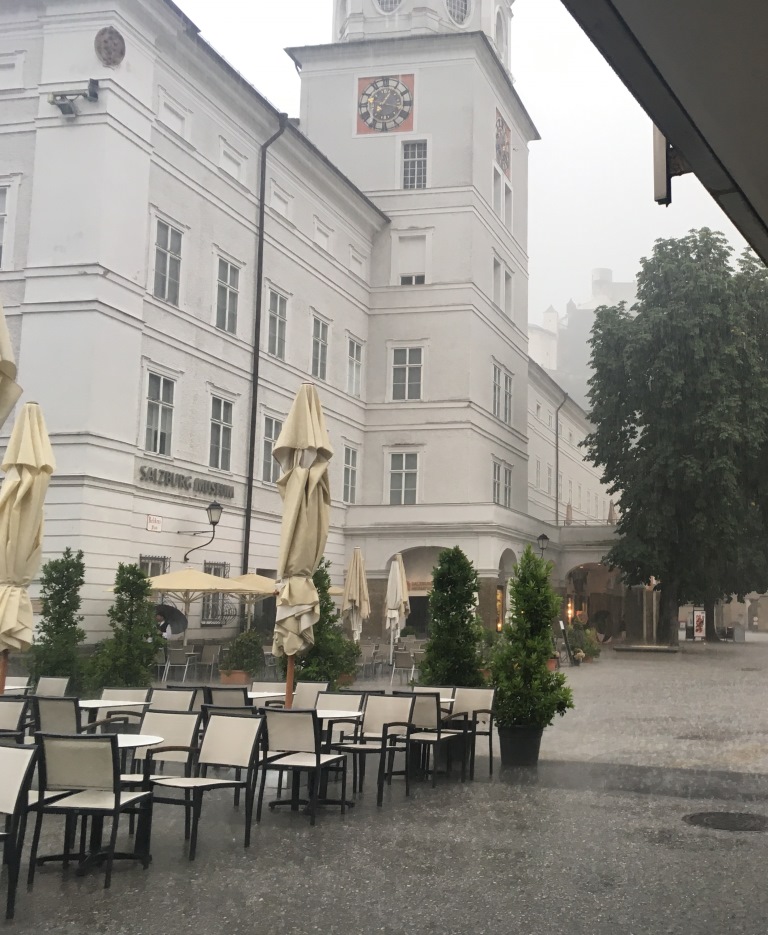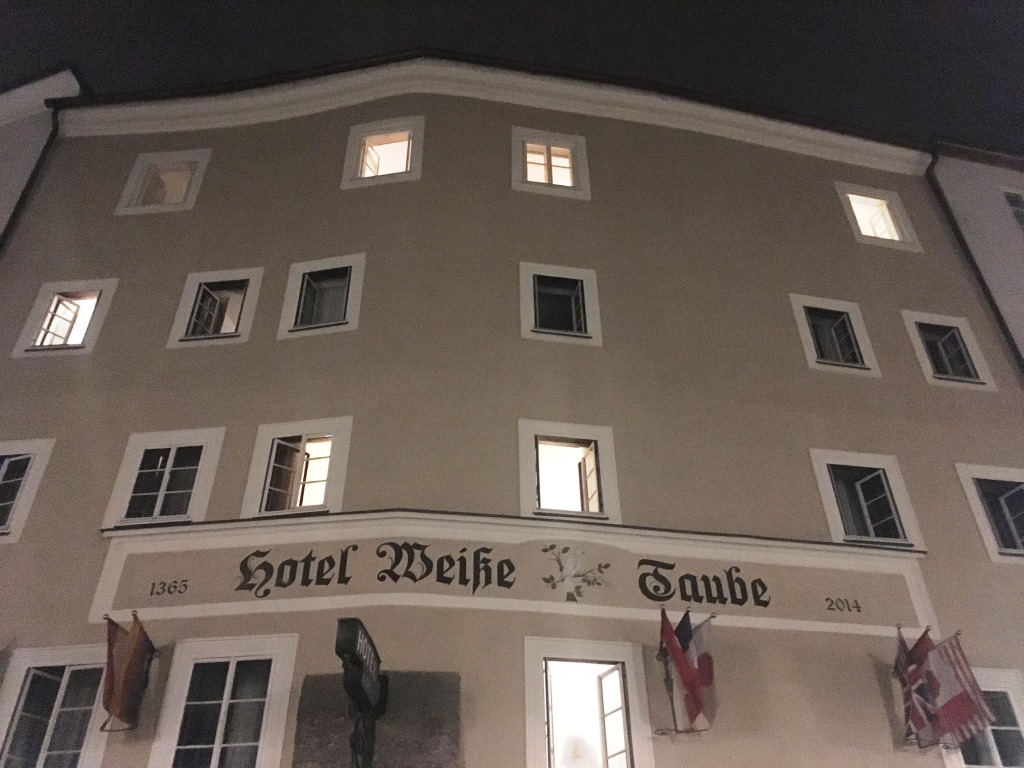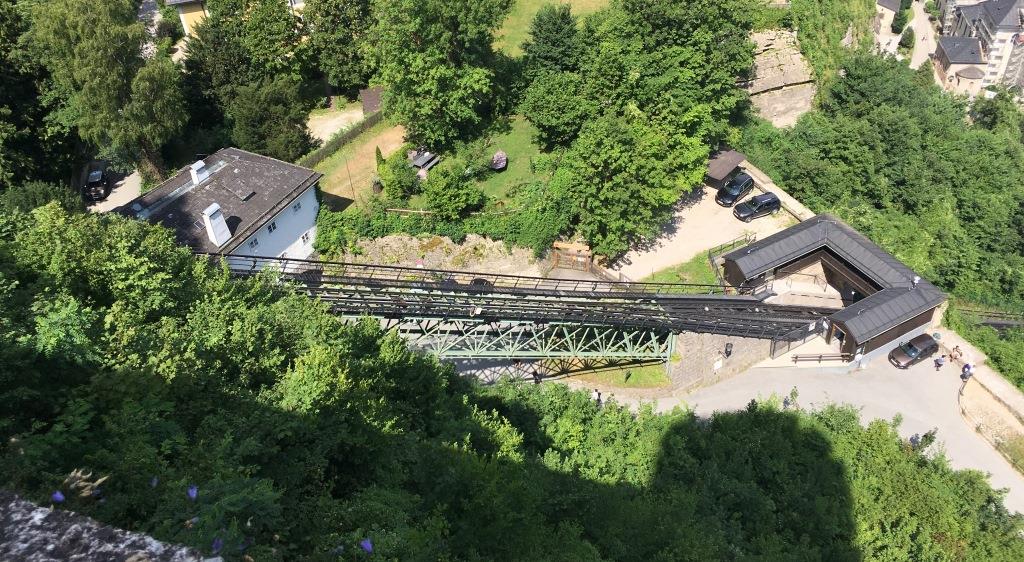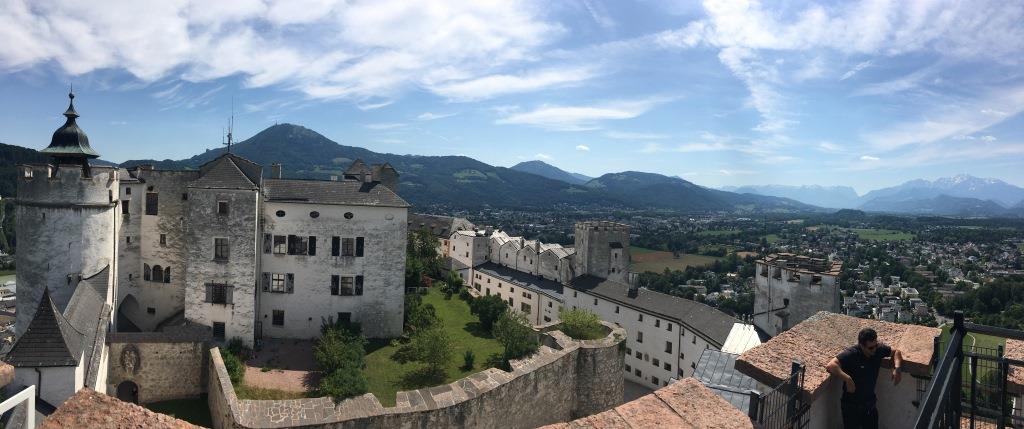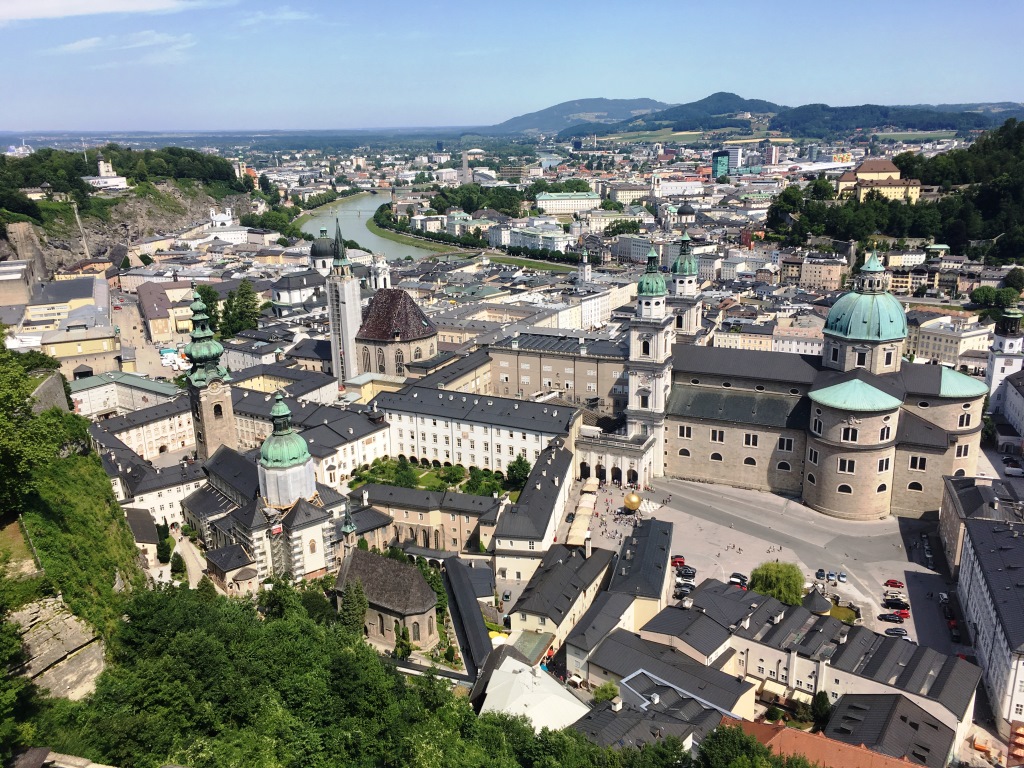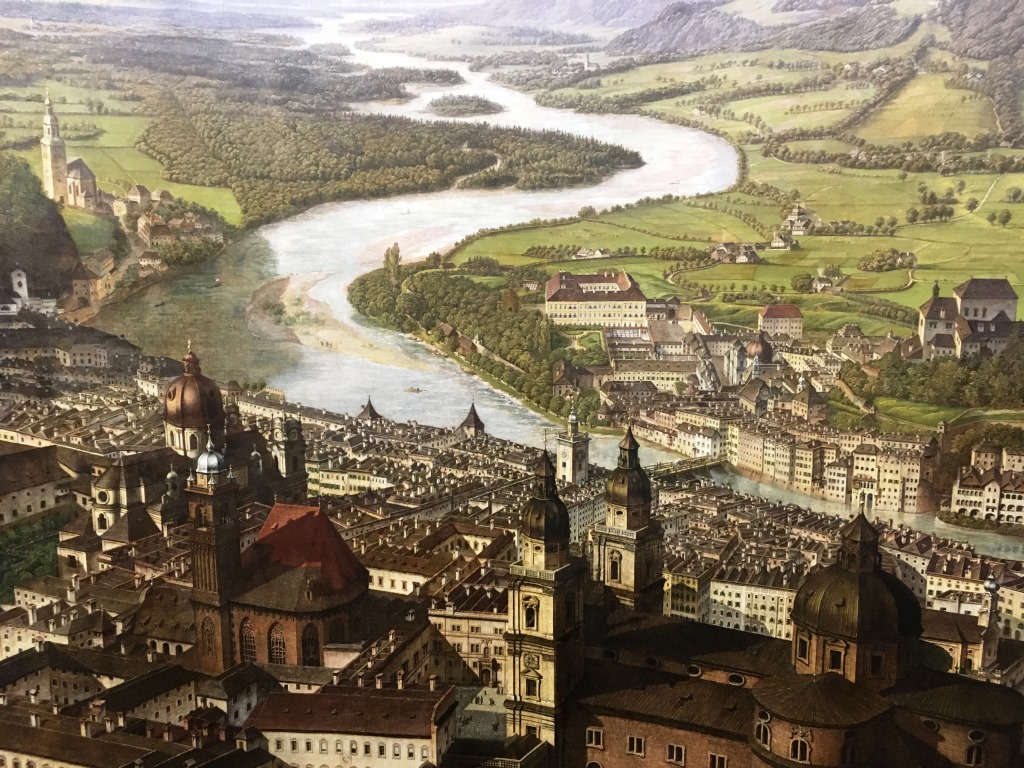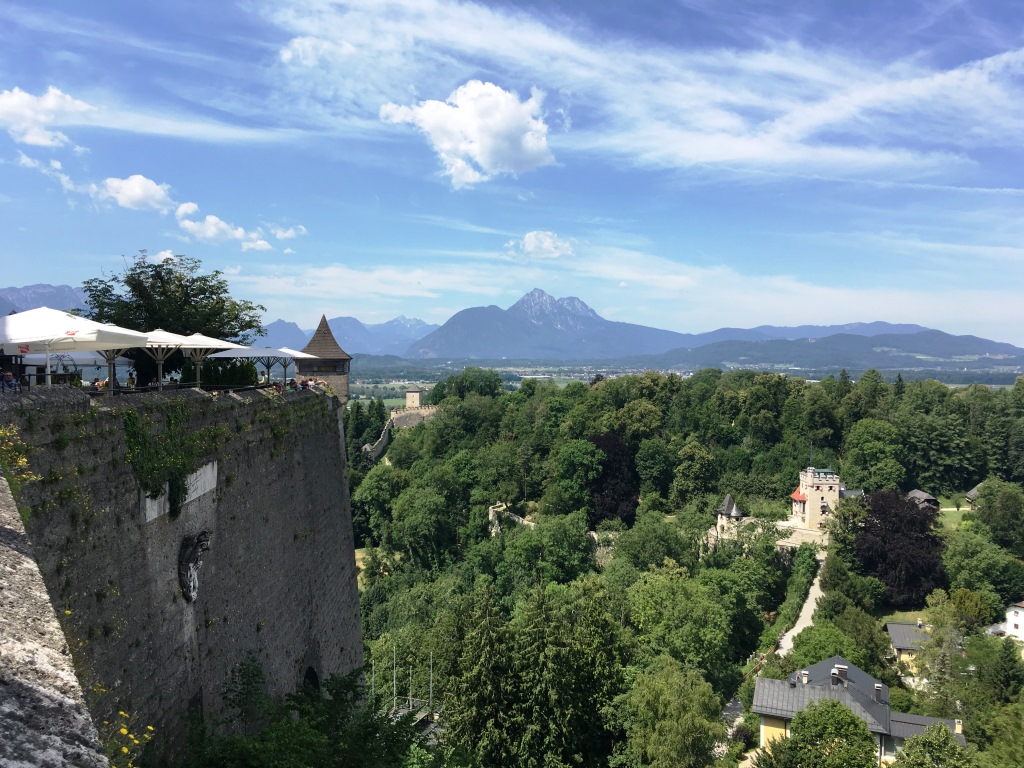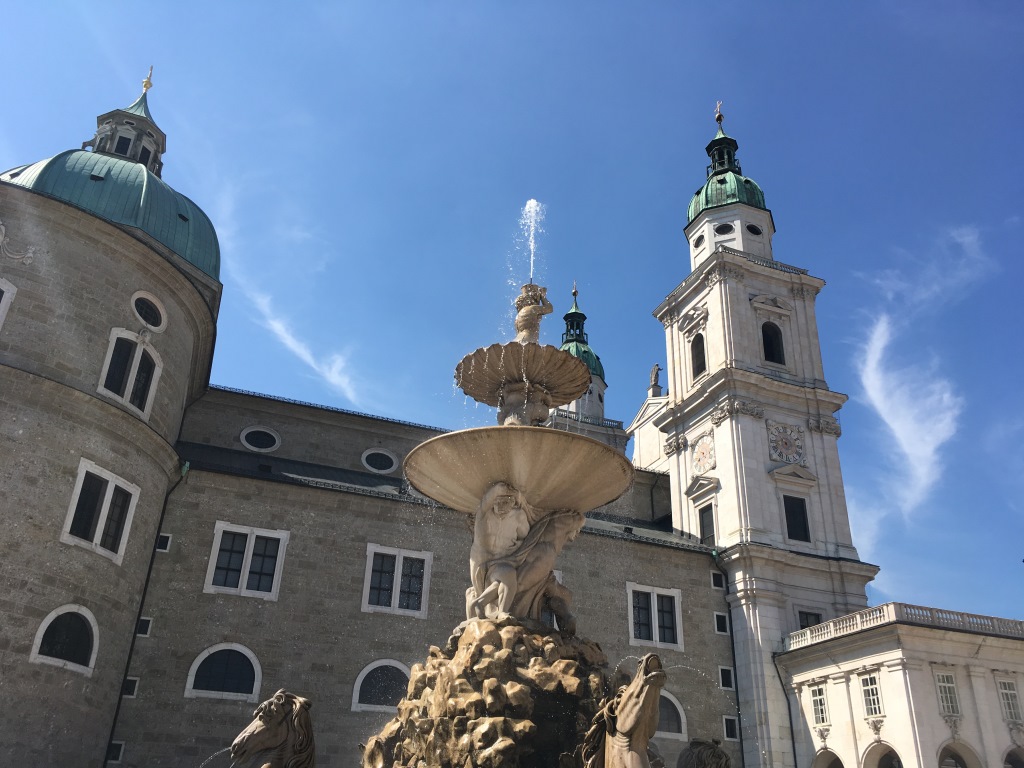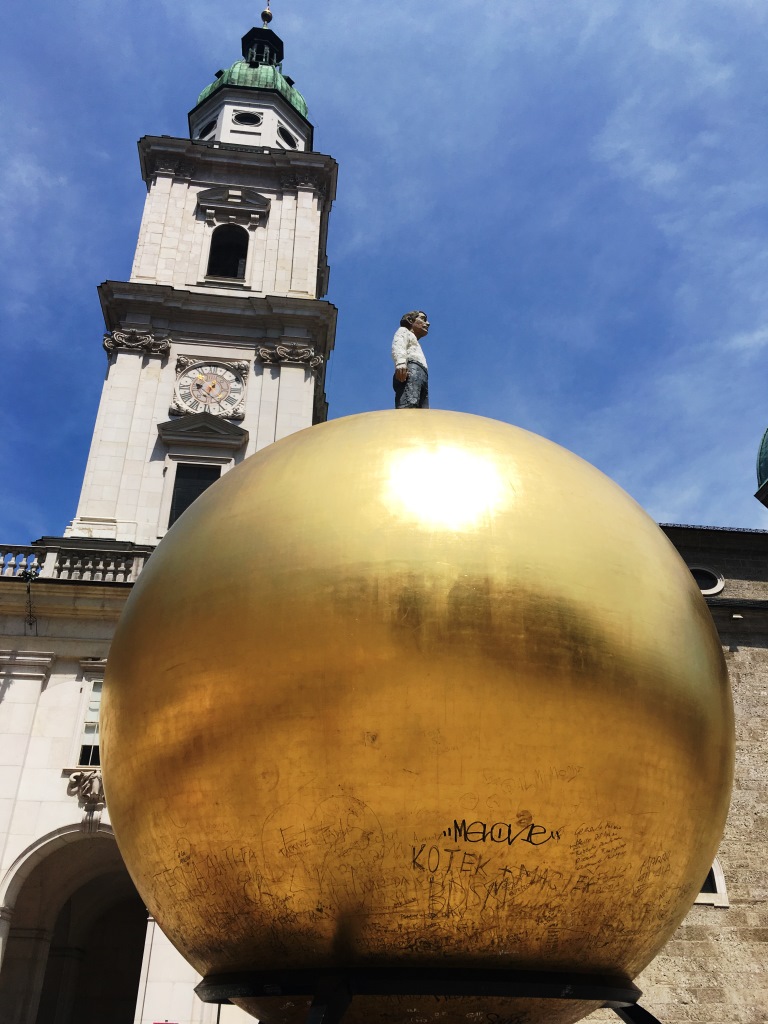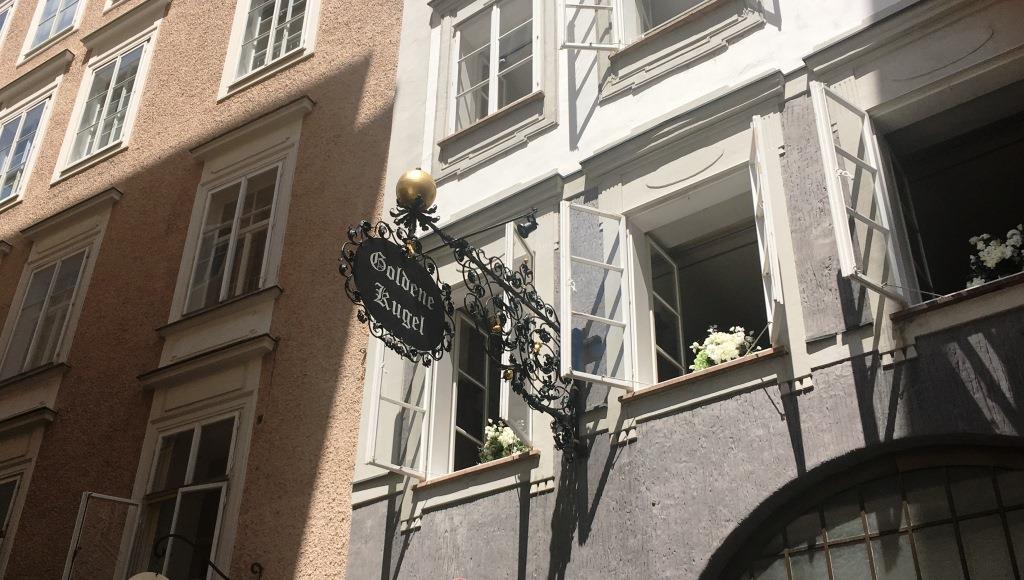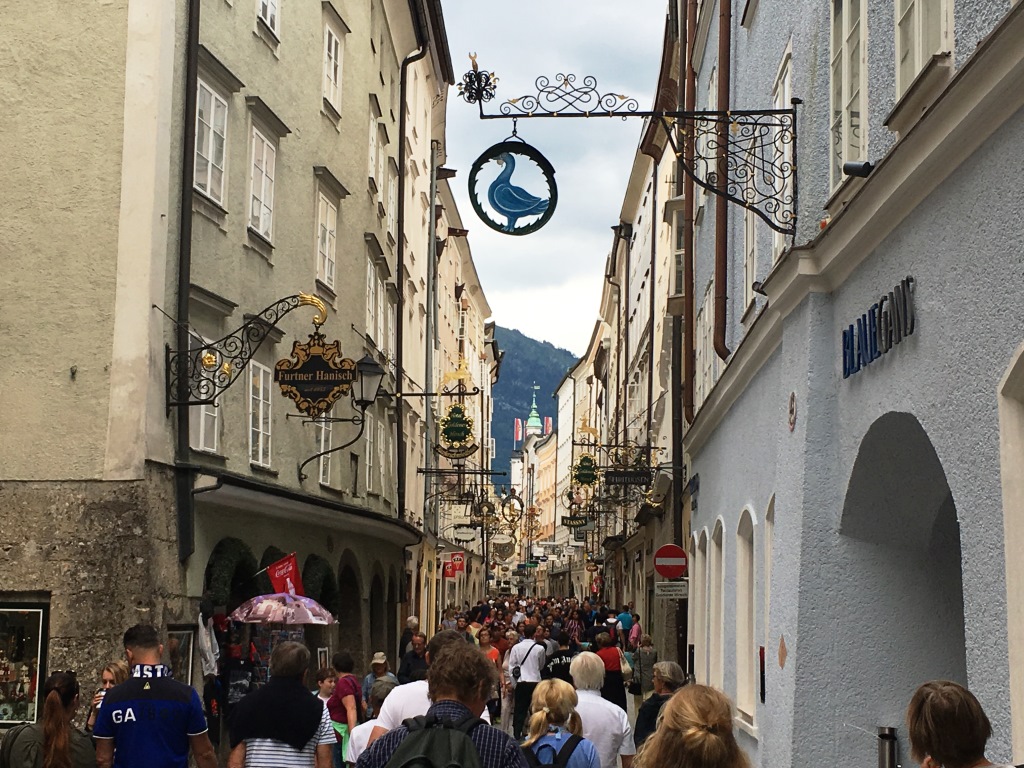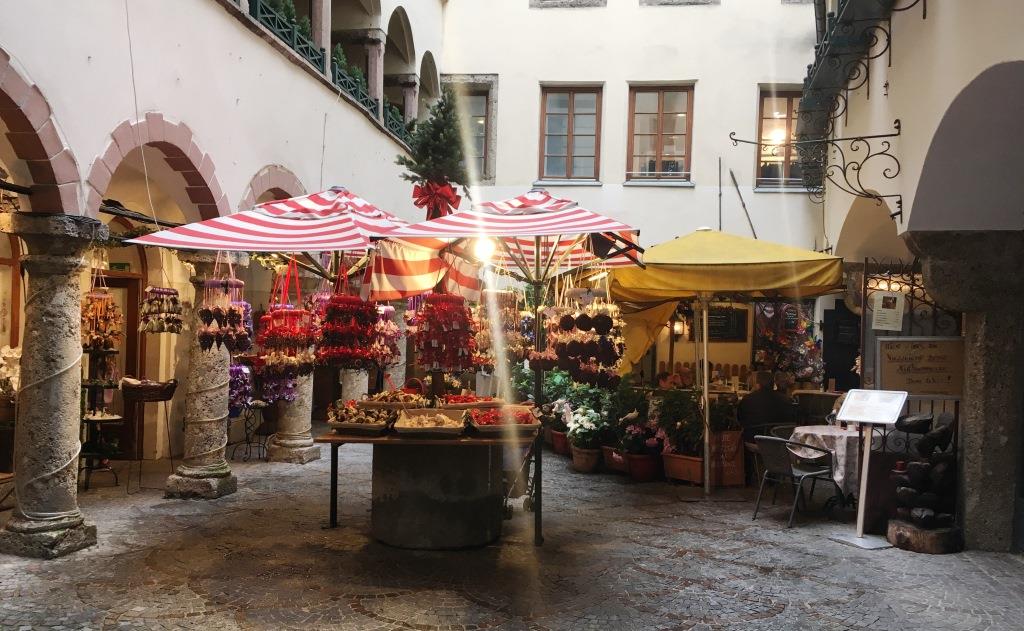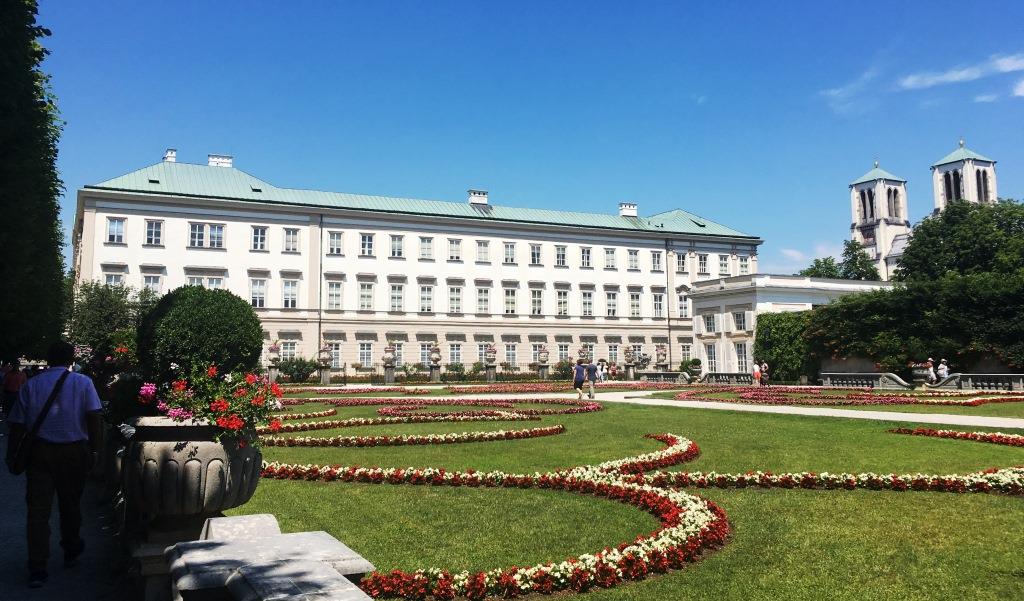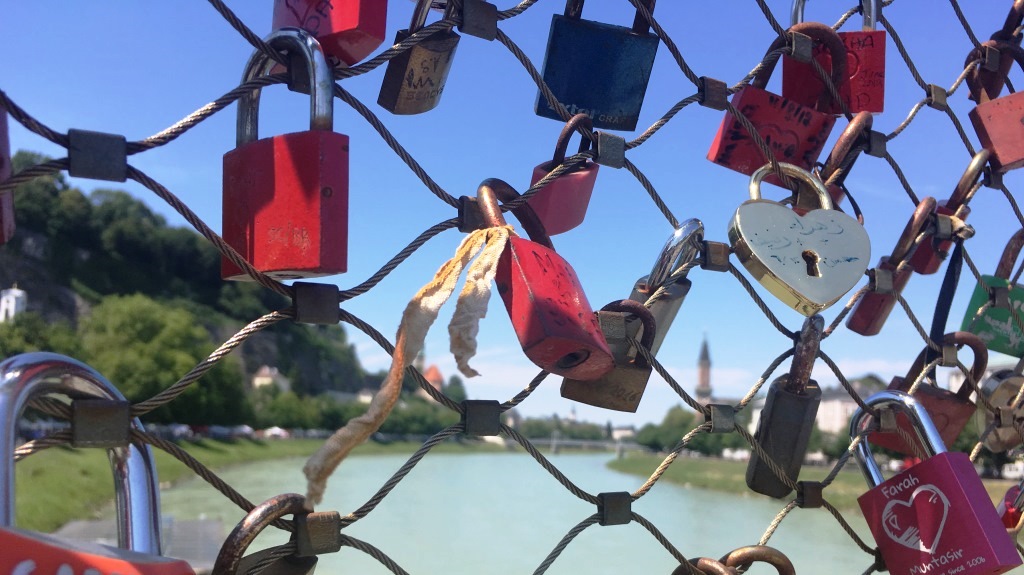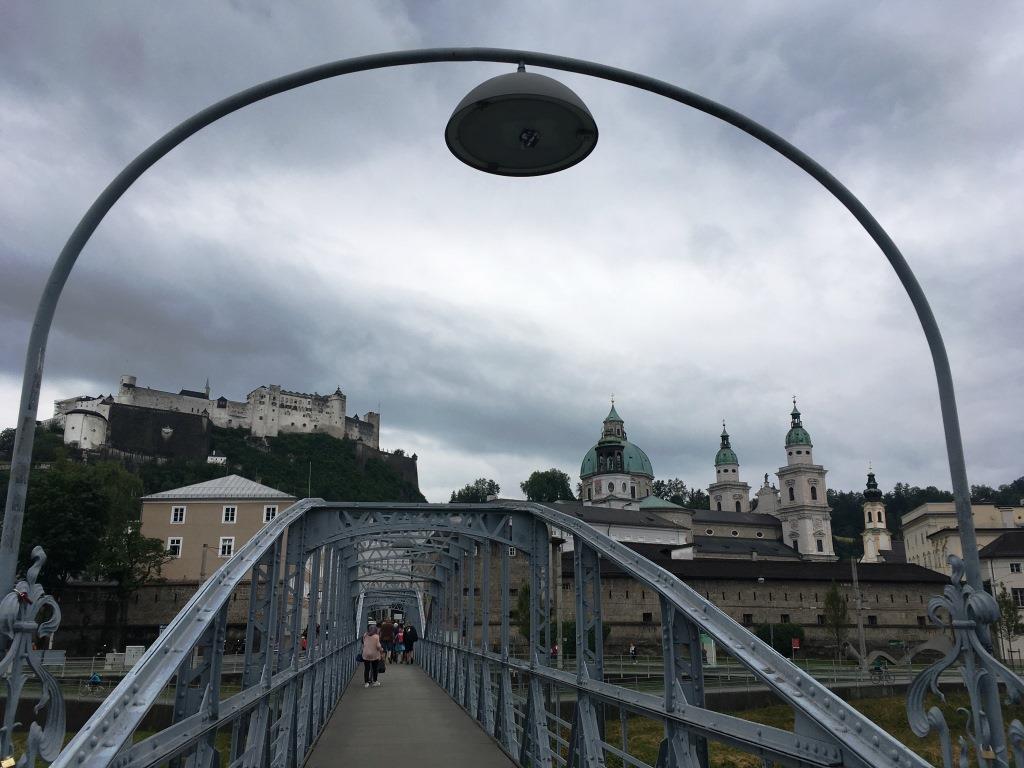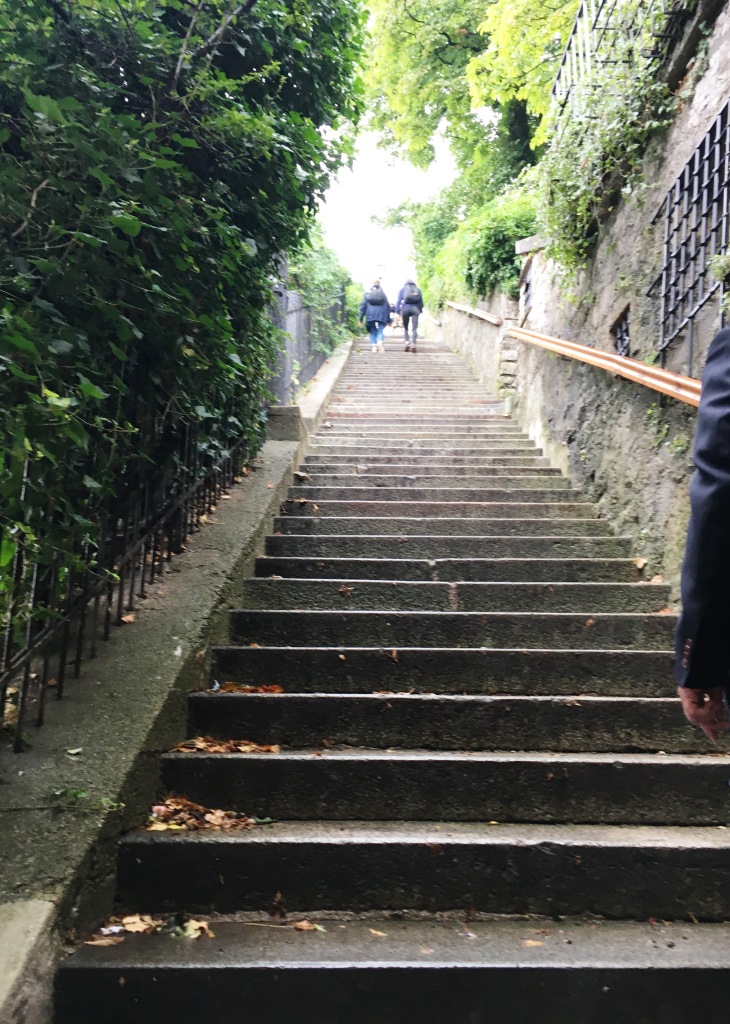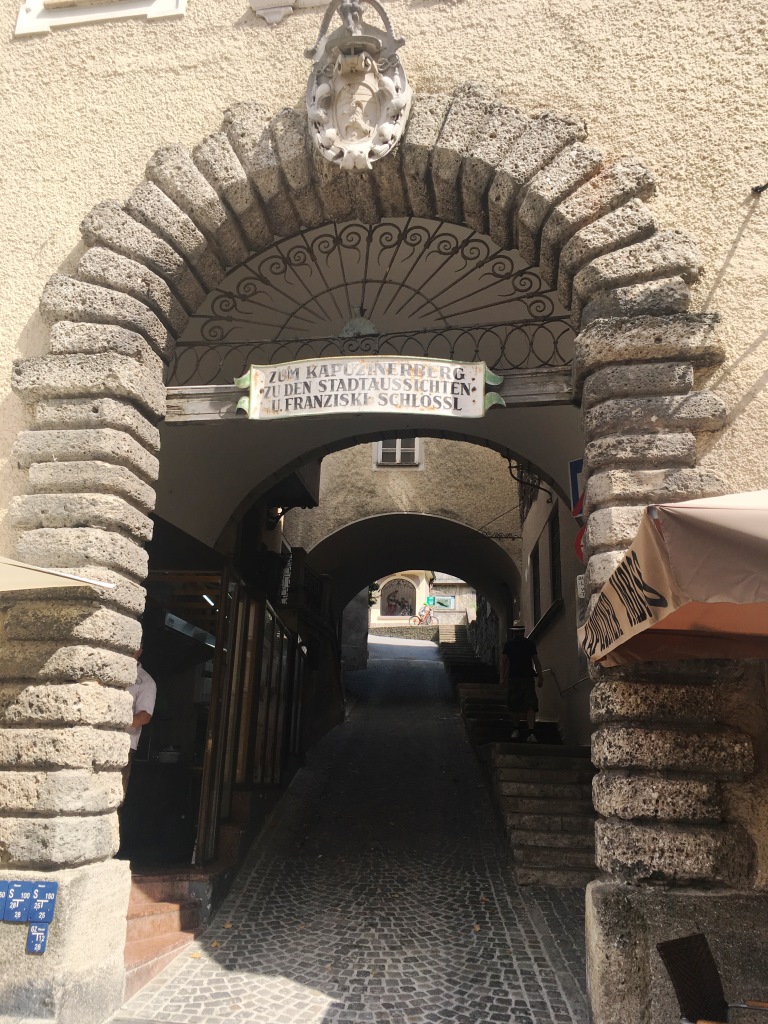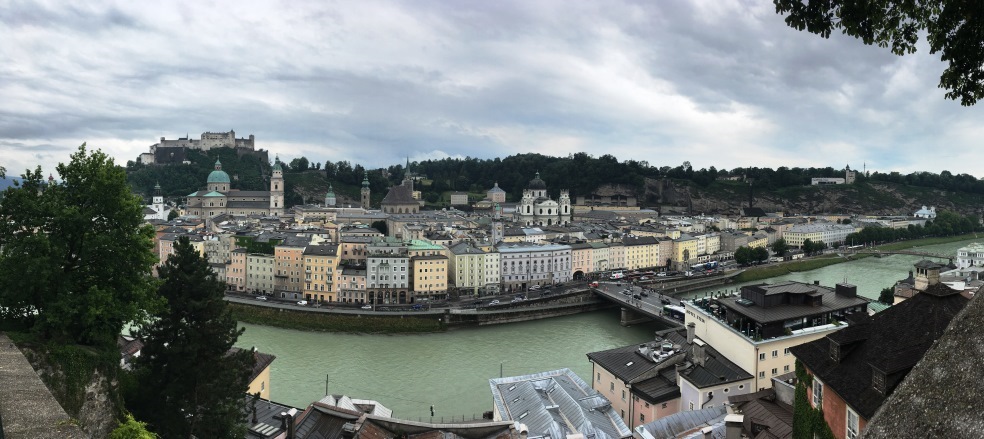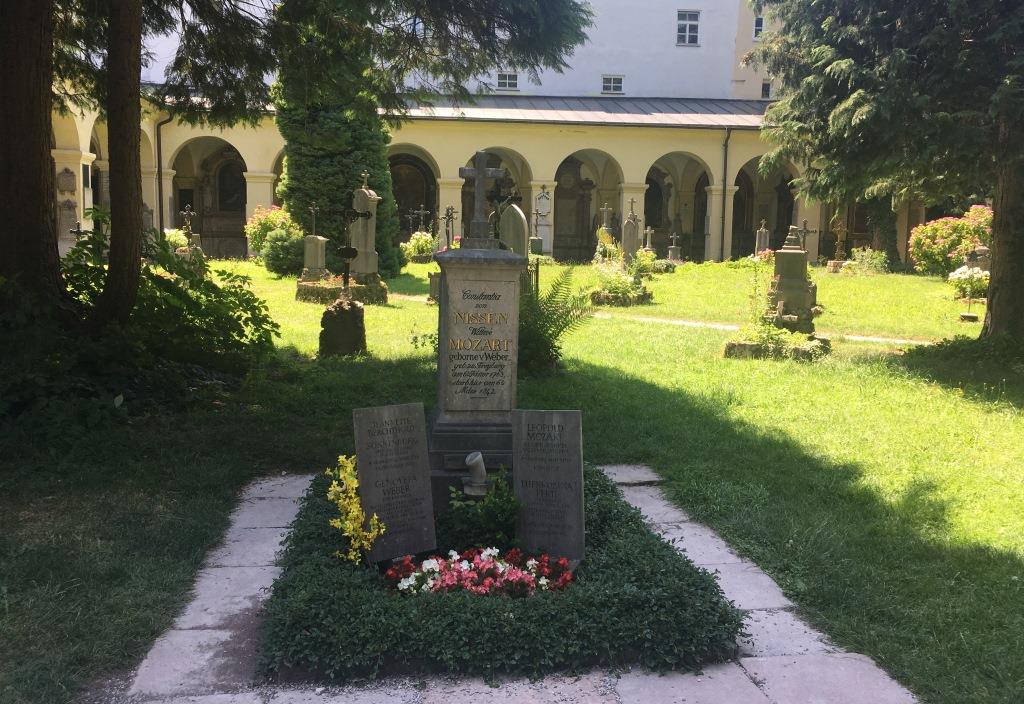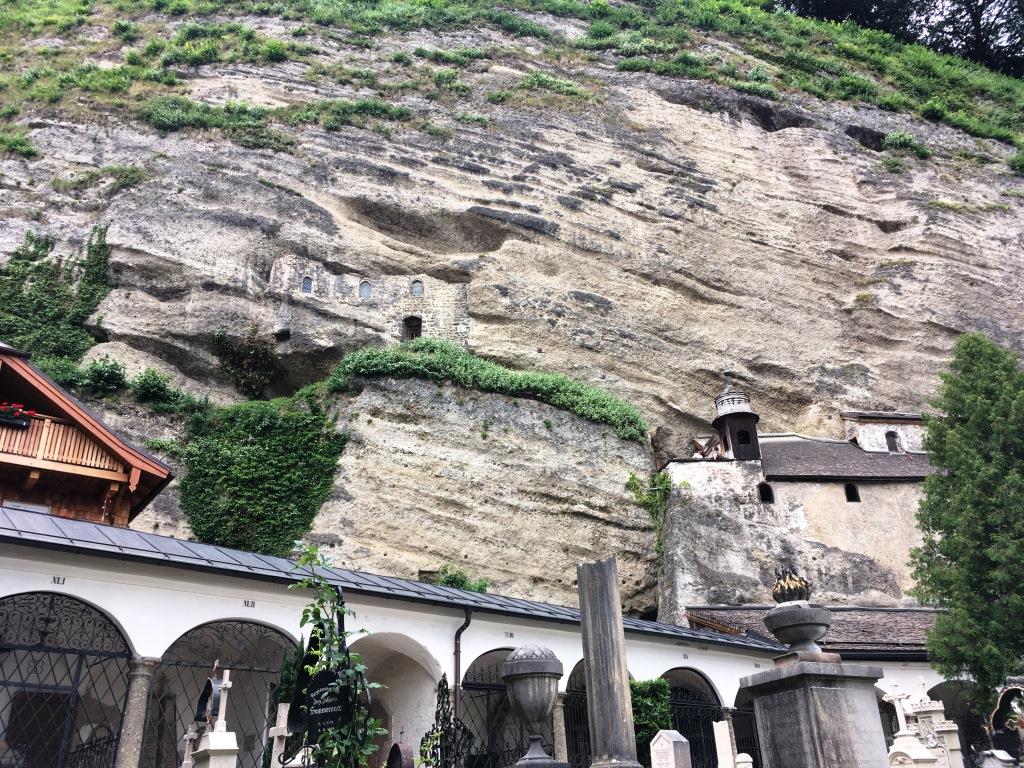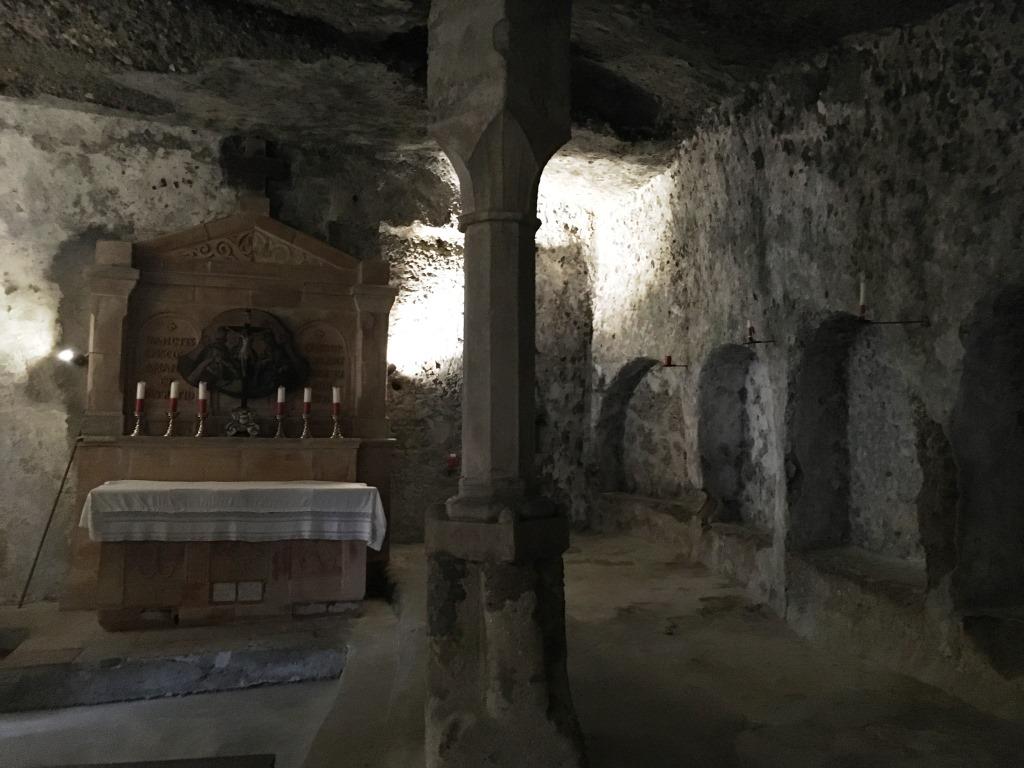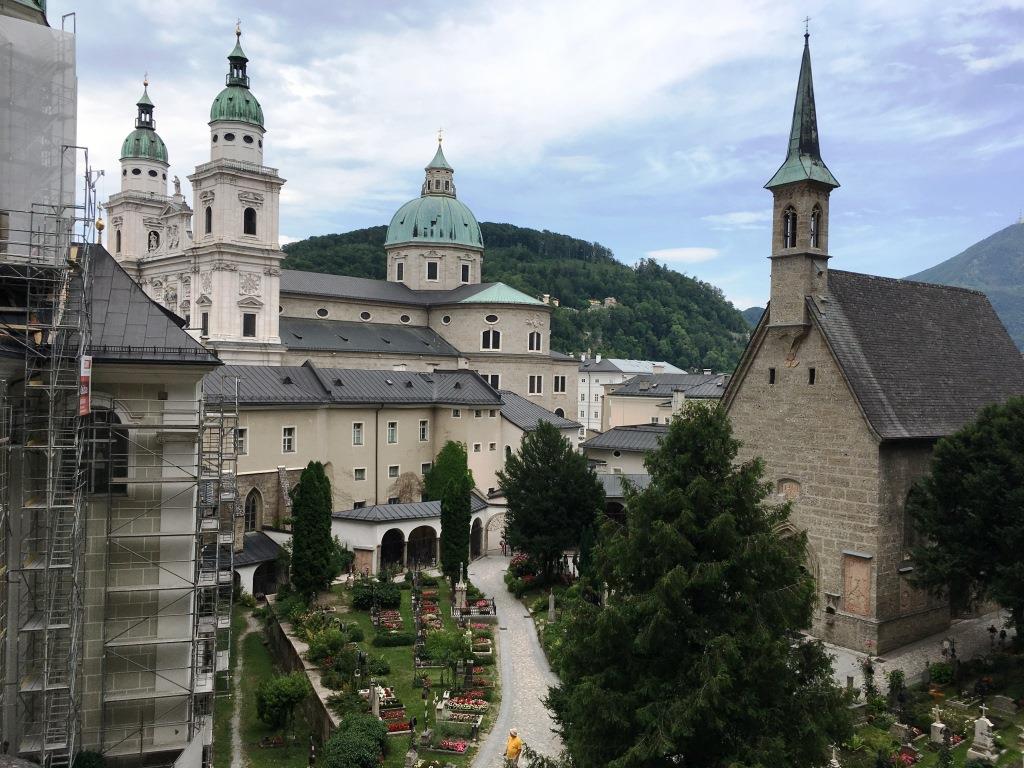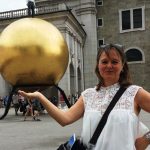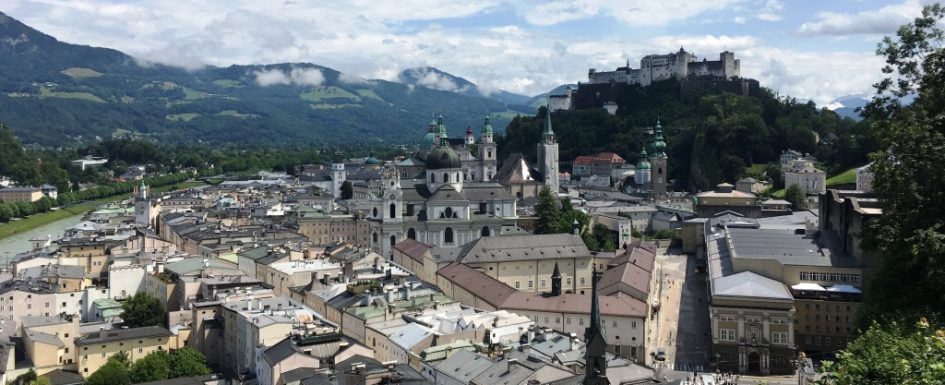
Salzburg is famous for its most prominent former resident: Wolfgang Amadeus Mozart – and despite him being dead for more than 200 years, he is still omnipresent. However, Salzburg has a lot more to offer than just memorial places of Mozart’s life and family. Actually, it is a beautiful city, featuring viewpoints on all surrounding hills and mountains, a well preserved old town and lots of historical places.Anzeige*
| Destination | Salzburg, Austria |
| How I got there | Eurowings, from Cologne-Bonn Airport |
| Where I stayed Hotel recommendations | Altstadthotel Weisse Taube: that’s where we stayed; a small hotel in the middle of the old town Altstadthotel Wolf: next to the “Weisse Taube”, also small and nice Hotel Sacher Salzburg: last but not least a famous name: Hotel Sacher Vienna is the famous “mother”, but Hotel Sacher in Salzburg wins over with an excellent location at the river Salzach and luxury that does not stay behing the Vienna premises Radisson Blu Hotel Altstadt: also located very centrally in the old town, otherwise the features you’ll know from Radisson blu |
| Restaurants |
Breakfast/Lunch/Coffee:220 Grad: modern, cosy, interesting food combinations Lunch:large varieties available; we tried the “Restaurant Grill” at the Hotel Sacher; they offer a good 3-courses “lunch menue” at a very decent price (between 15 and 25 Euros) Dinner:Gasthaus Zwettler’s: my personal favorite; located very close to the Hotel Weisse Taube; traditional Austrian cuisine, excellent Schnitzel |
| Things to do |
|
| Recommendations in a nutshell | See and eat! |
Salzburg – or “Mozart City”
The famous composer Wolfgang Amadeus Mozart is everywhere in Salzburg:his memorial on the Mozart Square…
…his birth house…
…the house where he lived, his sister’s house, his widow’s house, his father’s grave…thank god he was not born into a tribe of hundreds! Only for his grave you’ll look in vain – it is in Vienna.
However, some heritages are really worth a visit, most of all the fabulous music of Mozart. Heavy, but delicious: the famous “Mozartkugeln” – pralines filled with nougat, marzipan and pistachios. This sweet has been created by the pastry cook Paul Fürst, and is still sold at the “Konditorei Fürst” at several places all over Salzburg. However, due to a lack of patents there are numerous other “Mozartkugeln” around. In fact, it seems that every confectionary in Salzburg produces and sells them. I tried an “original” one from “Fürst” and found them great – but would not have been able to eat more than one at a time.
Schnürlregen
Another famous-infamous feature of Salzburg is the so-called “Schnürlregen” or “string rain” in English. This is a kind of drizzle, but usually long-lasting. Which renders the vegetation in the Salzburg area lush and green at any time of spring, summer and autumn. But also can get to your nerve if you’re a tourist and not so keen on getting permanently wet. We were lucky on our first day – sunshine and blue sky – but unlucky on the second: Schnürlregen most of the time. I’m not listing the following sightseeing spots in the chronological order we visited them, but you can clearly distinguish our photos of the first and second day according to the color of the sky.
Hotel Weisse Taube
Salzburg is pretty small (compared to cities like Vienna or Berlin) – just about 150.000 residents make it a suitable place for foot walks, as everything is conveniently located around the old town city center. And therefore, booking a hotel in the city center is a good idea. We stayed at the “Altstadthotel Weiße Taube”, a nice little hotel in a probably almost medieval building. During our stay, the outside temperatures went up to about 30 degrees, and inside our room is went easily beyond that. As medieval building do not really feature large windows, our cooling possibilities were rather limited. There’s a large fan in the room, but that’s it, basically. So, during the nights we had the option of staying awake because of the heat in the room or open the window and stay awake due to the noise in the street below…but otherwise the hotel was great, and the location absolutely perfect.
Fortress Hohensalzburg
After having arrived late in the evening, our first stop the next morning was the most popular sightseeing spot in Salzburg, the huge fortress “Hohensalzburg”. You can chose between walking up the hill or using the modern funicular transports:
– we opted for the latter. And decided to buy the 48 hour “Salzburg ticket”, which gives you access to all museums and public transport in Salzburg. Up on the hill, we went up to the tower to enjoy the great view into every direction:
to the south (above) and to the north:
Interstingly, there’s a huge cycloramic wall painting by Johann Michael Sattler in the “Salzburg Panorama” museum, showing the same view of Salzburg and its surrounding, just from the year 1829. Take both pictures – now and then – and compare!
Finally, enjoy a cool drink at the fortress restaurant – with a great view:
Despite Salzburg being a great spot for historical sights and “Mozart items” everywhere, there are other sightseeing highlights that you should not miss. For example the “Museum der Moderne”, the Museum of Modern Art.
First, because it is located on the hill “Mönchsberg” and will give you a great view over Salzburg, including the fortress on the next hill. And it offers usually nice changing exhibition. In our case, the exhibition featured “Salt Years” by the Israeli artist Sigalit Landau:
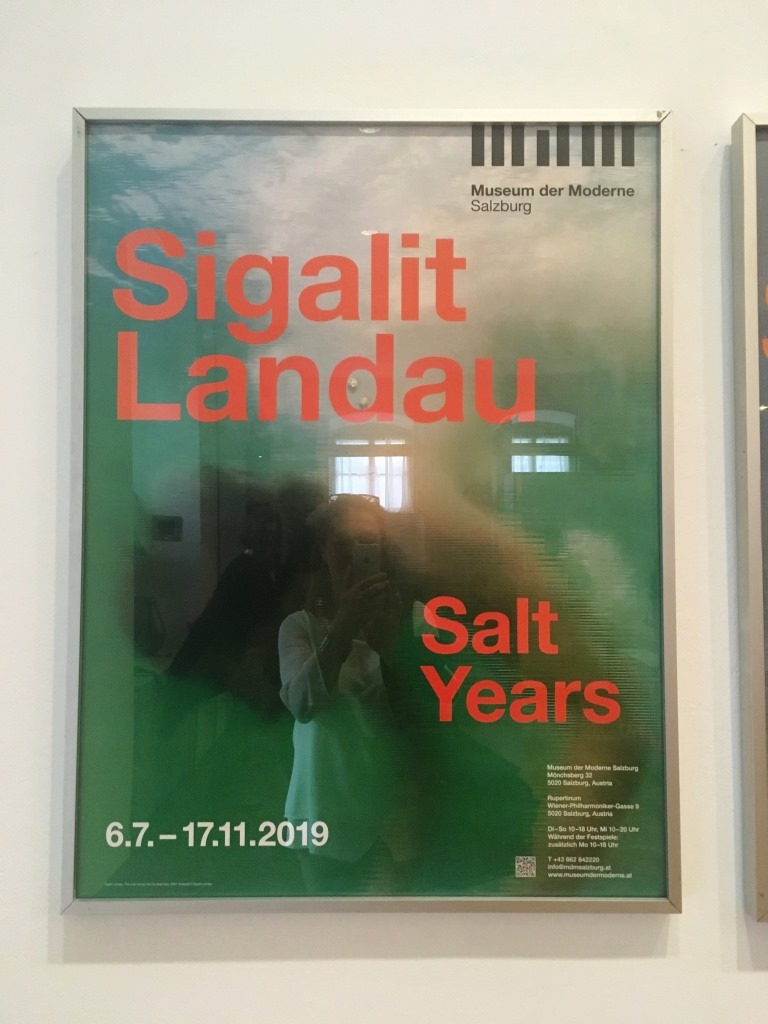 |
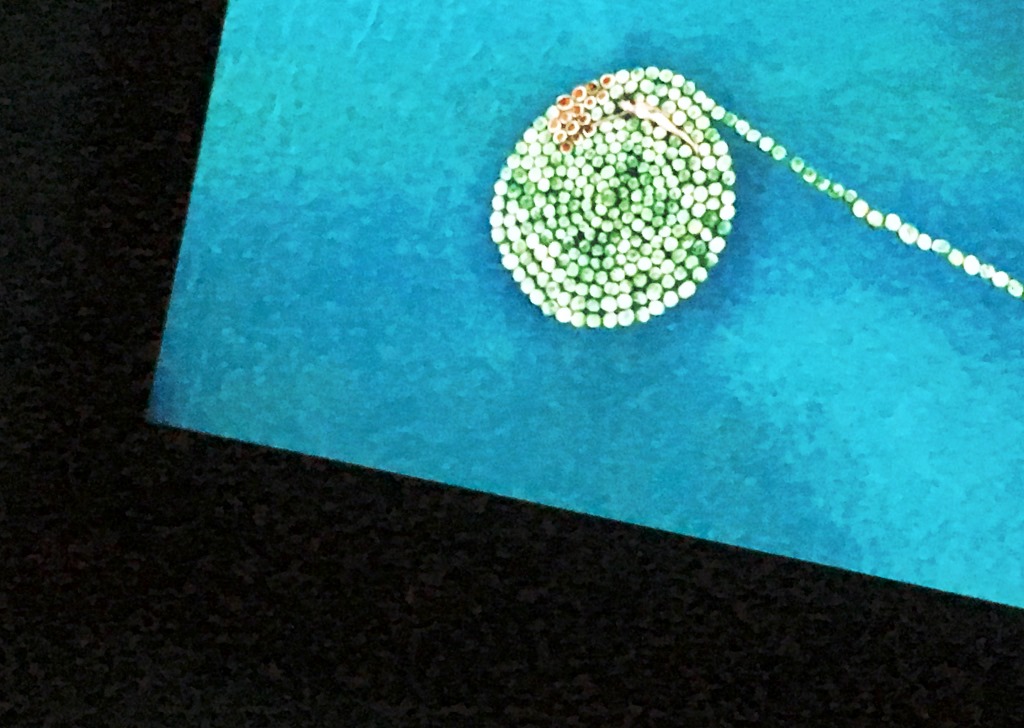 |
Part of it is located in the Mönchsberg premises, part of it in the old town premises, close to the festival buildings.
Salzburg Cathedral and Mozarts Coronation Mass
The Salzburg Cathedral is the center of the old town, and the church itself is definitely worth a visit.
Regarding our envisaged “Mozart experience” we were really lucky: on Sunday morning Mozart’s famous “Krönungsmesse” (coronation mass) was given in the Salzburg Cathedral, and that’s where this mass had been premiered on Easter Sunday, 4 April 1779. Sitting in the Cathedral, listening to the heavenly music and imagining how it might have been in 1779 – that’s an awesome feeling.
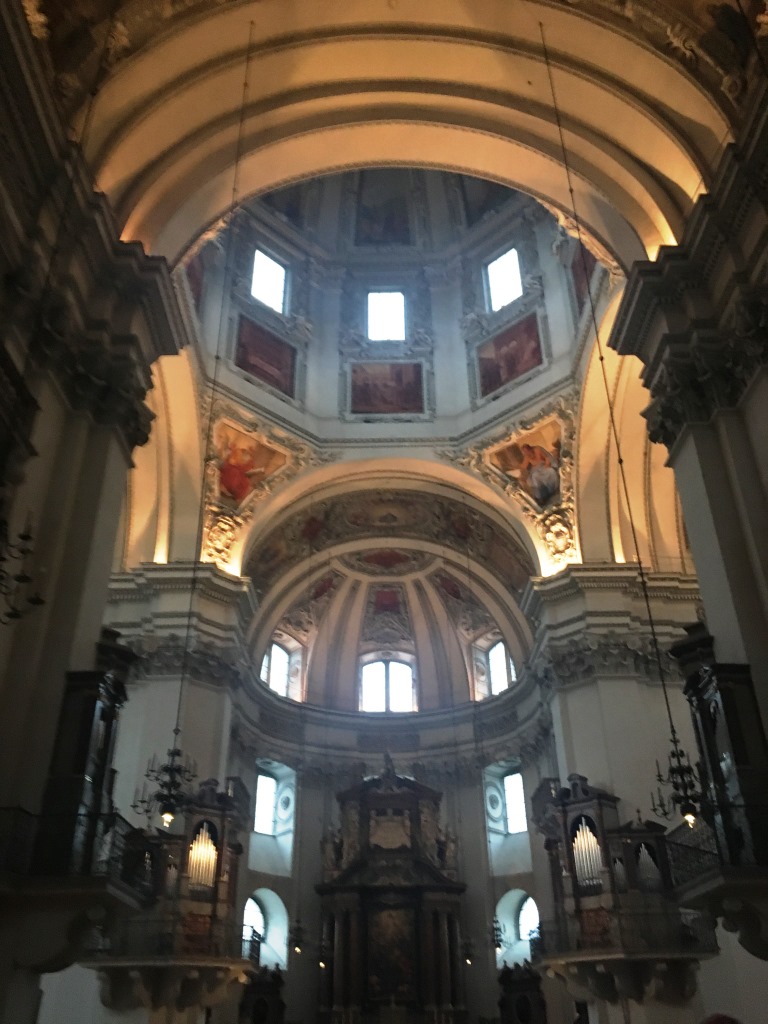 |
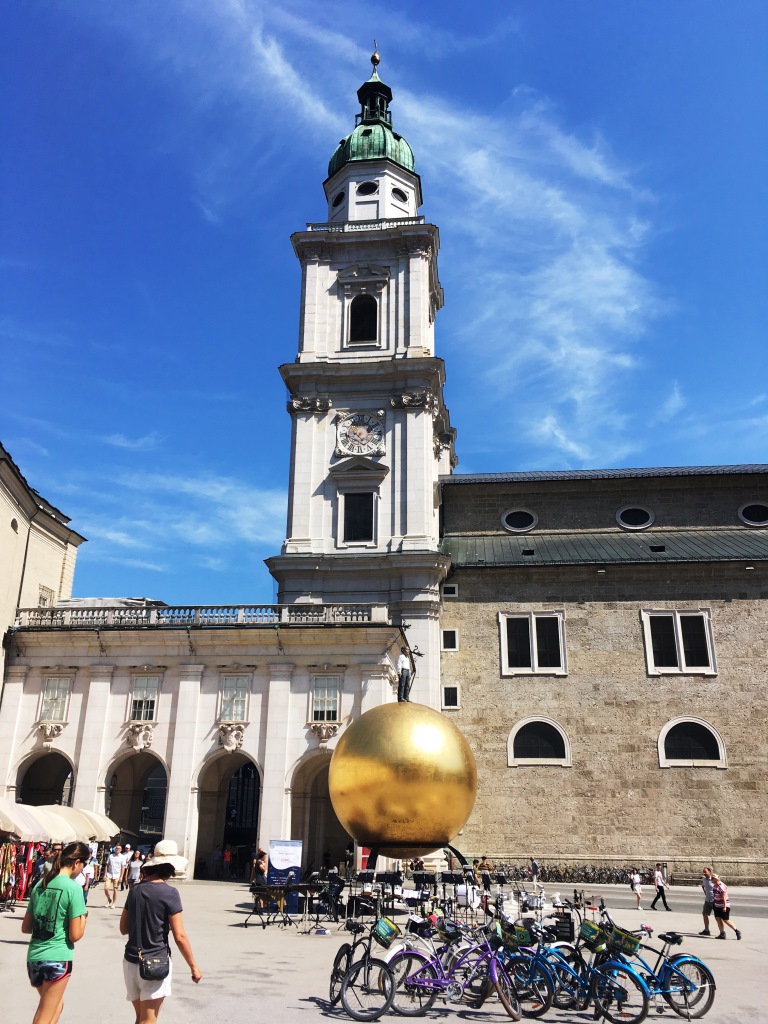 |
The golden Globe of Salzburg
Around the Cathedral are several large squares, and on one of them, the “Kapitelplatz” you’ll find a huge golden globe – a popular picture motive:
In fact, there is another golden Globe (though a smaller one):
…and you’ll find it in another must-see in the old town, the famous…
Getreidegasse
It is the major shopping street, thus haunted by the tourist masses…
…featuring very nice old-fahioned shop signs like the small golden globe. And is unique in providing access to lots of different “backyards”, called “Durch”. Which means “through” – you can walk through these backyards to the other side of the blocks.A famous “Durchhaus” is the “Schatz” house:
 |
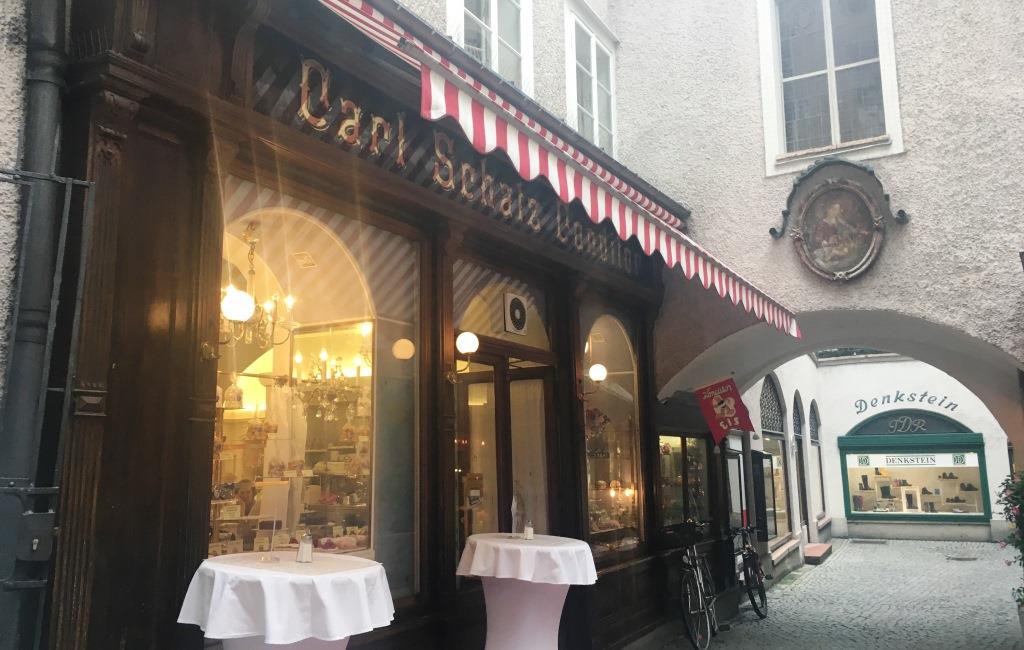 |
In these backyards you will find many beautiful small shops:
Across the Salzach River
…And in the middle runs a river…in the case of Salzburg it is the river “Salzach”. On the “Hohensalzburg” side you will find the medieval old town, on the other side there’s the more modern part (but also “iced” with some of the most famous sightseeing spots – like the house where Mozart lived:
and the palace “Mirabell”
with its beautiful garden:
There are several bridges crossing the river, but the two most beautiful ones are those for pedestrians: The Markartsteg:
Featuring thousands of padlocks:
And the Mozartsteg:
Kapuzinerberg
On the northern side of the Mozartsteg there’s the hill “Kapuzinerberg”. To get up there, you can chose either climbing the stairs called “Imbergstiege” that go straight up from the “Steingasse”:
Or you take the more moderate way via the “Kapuzinerberg” street:
In any case, you’ll end up at the viewpoint just below the Kapuziner monastery, and from there you’ll have a great view of the old town and the Hohensalzburg fortress in the back.
On this side of the river, you’ll also find another nice shopping street, the “Linzer Gasse”:
Sebastianfriedhof
Approximately in the middle of the Linzer Gasse a church comes up on the left side, the St. Sebastian’s church. Which is nice, but more famous is the adjacent cemetery, which has been built between 1595 and 1600, according to the italian “Campo Santo” ideal.
It features a nice cloister:
It is a great place to get some rest and enjoy a quiet surrounding.
And it is famous for harboring – besides the famous Paracelsus – the grave of Mozart’s father and wife (and probably some more family members):
St. Peter Church, Cemetery and Catacombes
Another nice place with a certain “morbid character” is St. Peter’s Monastery, Cemetery and Catacombs. St. Peter’s was founded in the 7th century, and since then the church and abbey have been a spiritual heart of Salzburg. The cemetery and catacombs are obviously a must-see for fans of “The Sound of Music” (which we aren’t – so I can’t tell you why…). At least the Early Christian Catacombs, built into the cliffs of the Mönchsberg, are really nice. Already from the outside they look spectacular:
The entrance is located at the graves of Mozart’s sister Nannerl and Michael Haydn. After entering you’ll have to get up narrow staircases:
After 48 steps you’ll enter the first vault, the “Gertrauden Chapel”, dating back to 1178. 36 further steps up you’ll get to the “Maximus Chapel”:
Occasionally you’ll have a glimpse to the outside to the cemetery:
The vaults from about 1.000 years ago, when they served a hermitages and burial sites, really have a mystical atmosphere.
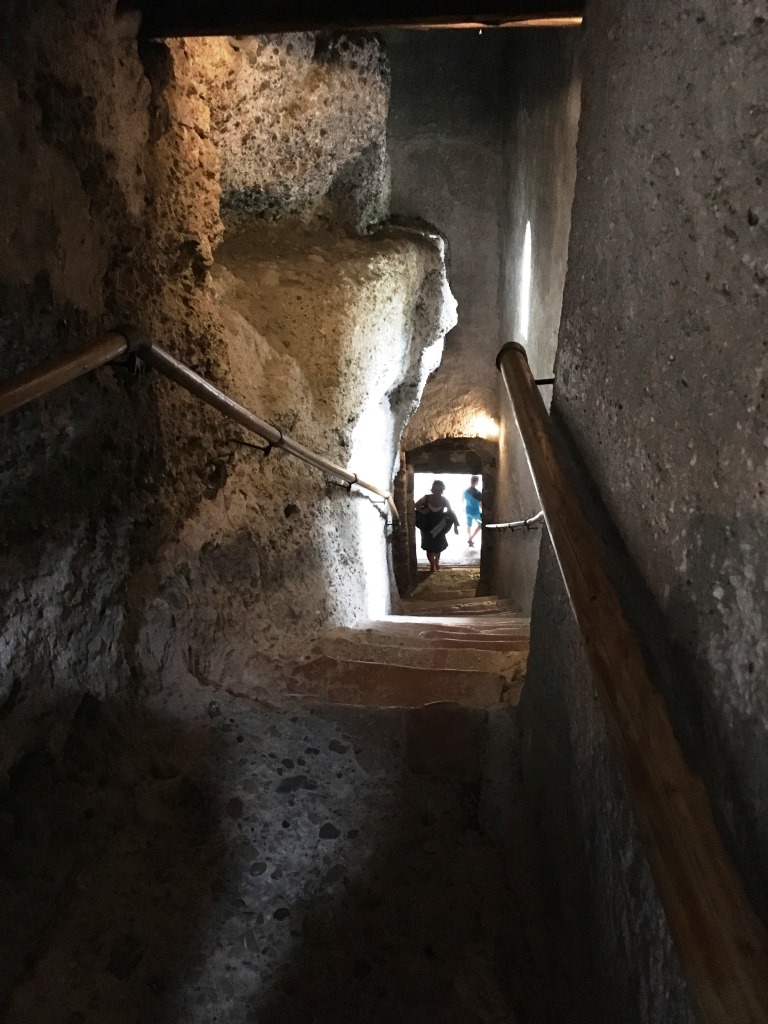 |
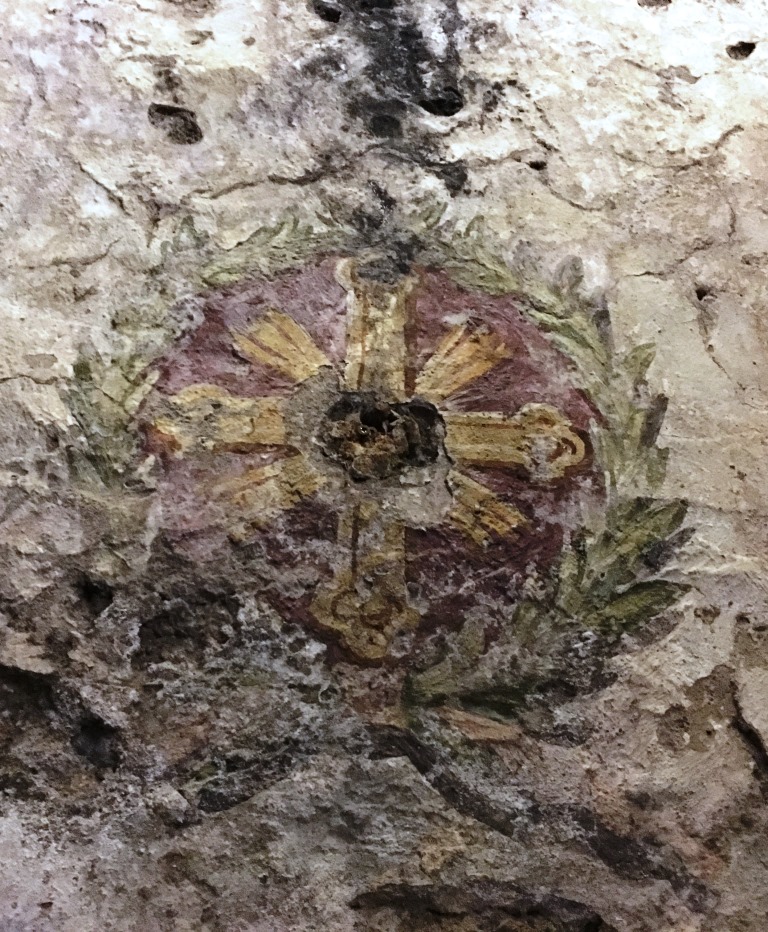 |
Next to the St. Peter’s Church you’ll find the old water mill that served the St. Peter’s bakery for hundreds of years:
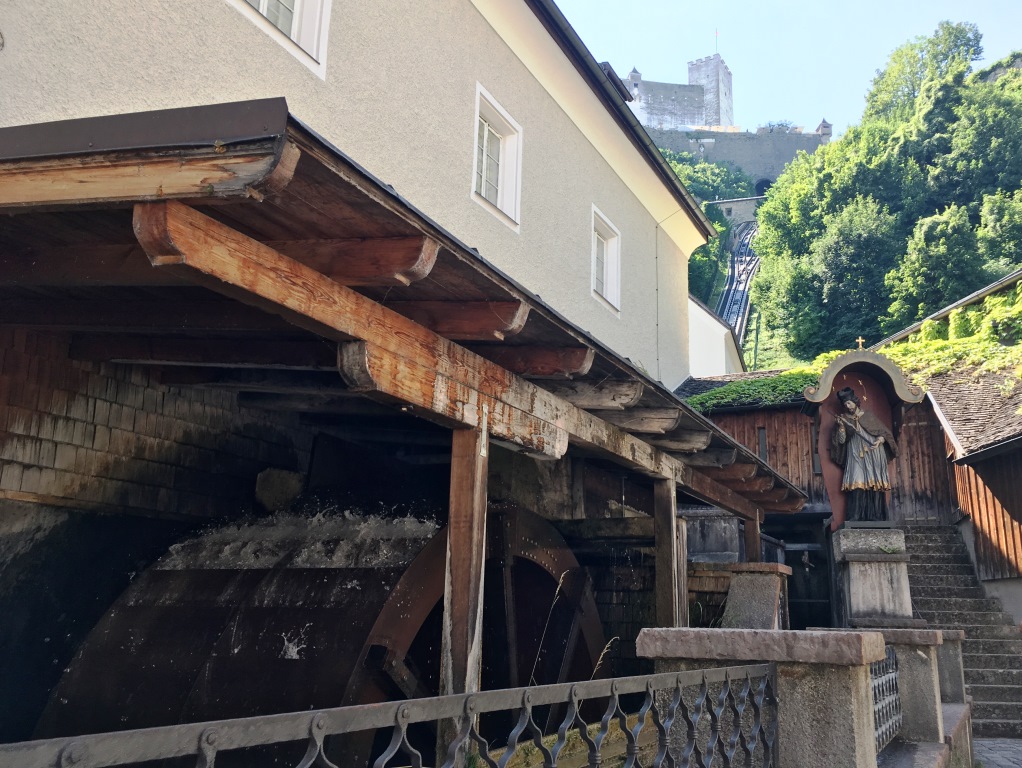 |
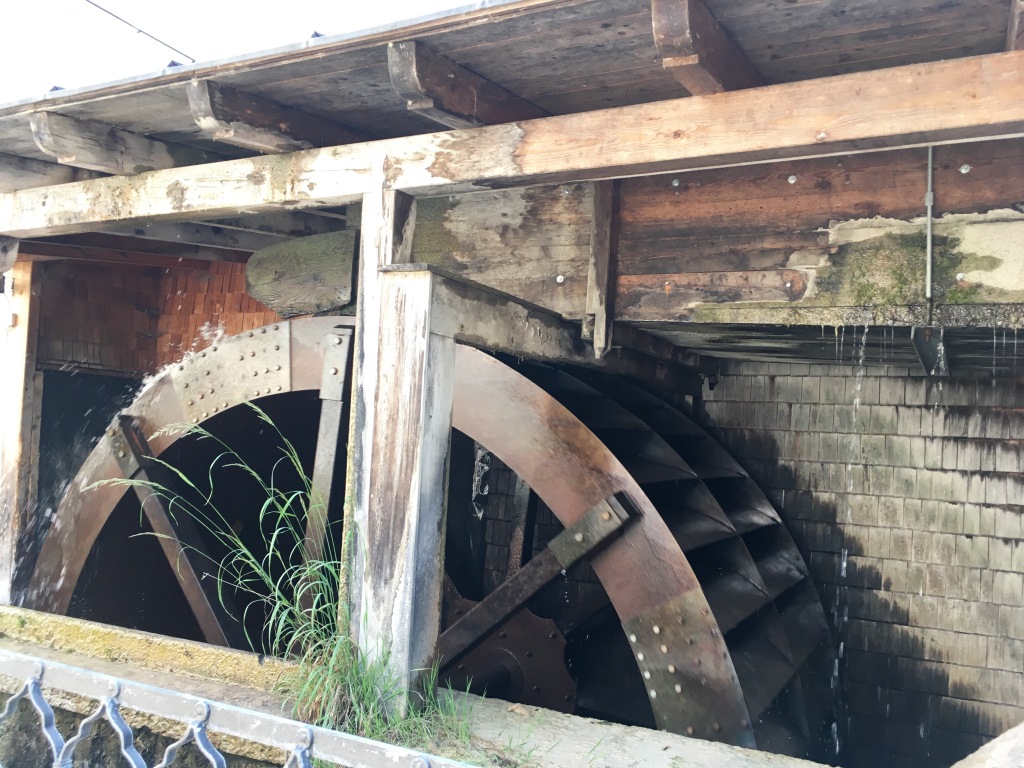 |
Nowadays, the bakery is still working (great bread – try!) and quite famous, being the eldest bakery of Salzburg:
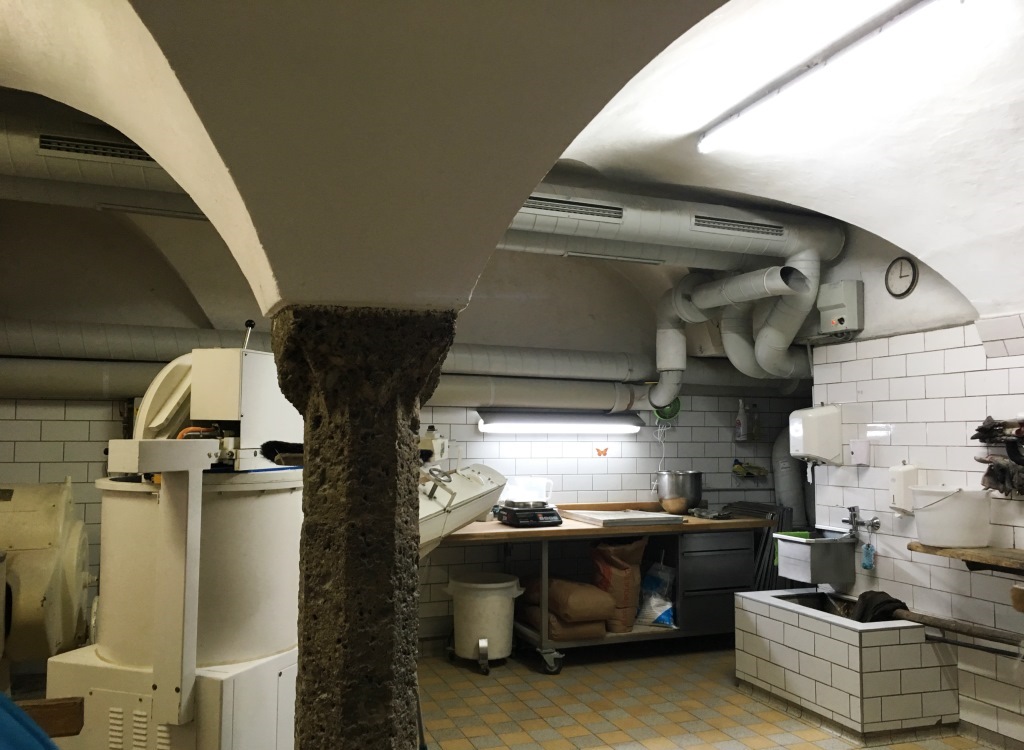 |
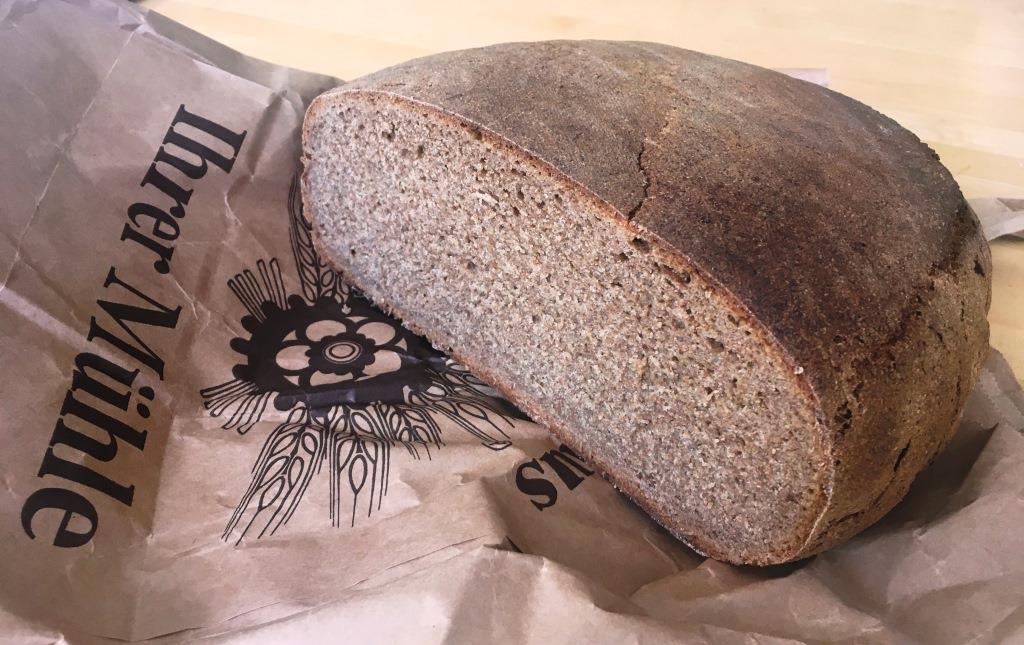 |
Dining out
Salzburg – like Vienna – is a great place for dining, if you like the Austrian cuisine. Many dishes are pretty hearty, but – to my taste – delicious. Like “Wiener Schnitzel”, “Backhendl” (a chicken, coated with breadcrumbs and fried) or “Tafelspitz” (see my post about Vienna), “Sachertorte” (preferably enjoyed at the Hotel Sacher) and “Palatschinken”. And a dish named after Salzburg: the famous local “Salzburger Nockerln” (see the recipe below), which is a dessert that you should definitely share, as the portion it usually comes in is HUGE – unfortunately, our pictures are of a pretty low quality, but belive me – the dessert was great!
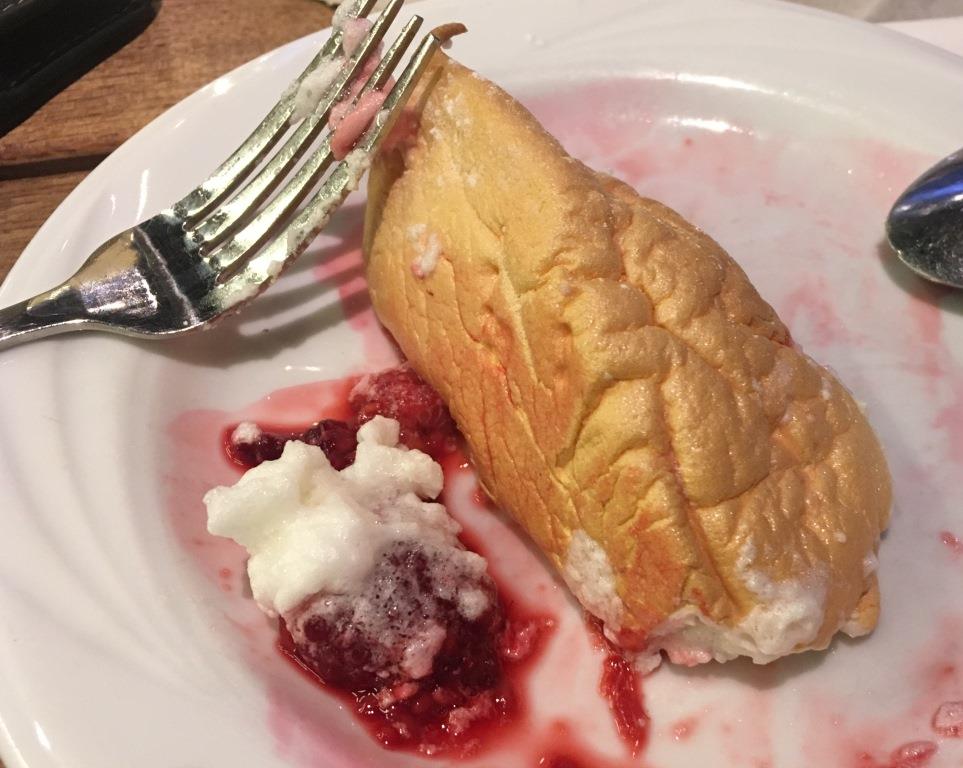 |
 |
And here’s the famous local Recipe: Salzburger Nockerln
Ingredients for 4 Portions
- 10 g butter for spreading the baking form
- 3 tablespoons flour
- 4 tablespoons milk (full-fat)
- 70 g sugar
- 6 egg white
- 1 package vanille sugar
- 1 piece of lemon, only peel (grated)
- 1 Prise salt
- 10 ml orange liqueur (e.g. Cointreau)
- 4 egg yolk
- 10 g corn starch
- 20 g powdered sugar for icing
Preparation
- Preheat the oven to 180° Grad, coat a baking form with butter.
- Mix vanille sugar with 4 tablespoons of milk in a bowl, pour into the baking form and warm it up (approx 1 minute) in the oven.
- In another bowl, mix egg white, salt and corn starch (with a mixer), add sugar gradually.
- And in a third bowl, mix the egg yolks, the grated lemon peel, the orange liqueur and a bit of the egg white.
- Add the remaining egg white carefully, sieve the flour on top and mix gently, again.
- From this mass, cut off pyramidal pieces – these are called „Nockerl“ – and put them into the baking form.
- Bake for approx. 16-18 minutes in the oven.
- After taking them out, sprinkle with the powdered sugar and serve immediately.
Salzburger Nockerl are often served with raspberries or a raspberry sauce – enjoy!
Greetings from Salzburg!
*According to a German Court decision, all texts containing links to commercial pages (e.g. links to Tripadvisor, Airline, hotel or restaurant websites) have to be identified as “commercial” (in German “Anzeige”). As my texts do contain links like that, I therefore identify each post and page containing a link as “Anzeige”. However (and referring to the “About Me” page) I would like to point out that I do NOT post any sponsored content in my texts. I pay for all my trips myself.
